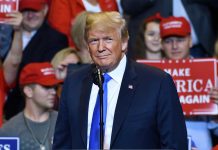
Economic Downturns and Initial Responses
When economic storms brew, the US government typically responds with a combination of monetary and fiscal policies. The Federal Reserve, our central bank, often takes the lead by adjusting interest rates and implementing quantitative easing measures. Meanwhile, Congress and the President may enact fiscal stimulus packages, including tax cuts or increased government spending.
These initial responses aim to stabilize financial markets, boost consumer confidence, and prevent a deeper economic downturn. However, the effectiveness and long-term consequences of these actions are often debated among economists and policymakers.
The Great Depression and the New Deal
The Great Depression of the 1930s marked a significant shift in the government’s approach to economic crises. President Franklin D. Roosevelt’s New Deal introduced a wave of government programs and regulations aimed at providing relief, recovery, and reform.
“The lessons of history, confirmed by the evidence immediately before me, show conclusively that continued dependence upon relief induces a spiritual and moral disintegration fundamentally destructive to the national fiber. To dole out relief in this way is to administer a narcotic, a subtle destroyer of the human spirit.” – Franklin D. Roosevelt
While some argue that the New Deal helped pull the country out of the Depression, others contend that it prolonged the economic downturn and expanded government power beyond its constitutional limits.
The 2008 Financial Crisis and Government Intervention
The 2008 financial crisis prompted a massive government response, including the controversial Troubled Asset Relief Program (TARP) and the American Recovery and Reinvestment Act of 2009. These measures involved bailouts of financial institutions, automakers, and increased government spending on infrastructure and other programs.
Critics argue that these interventions created moral hazard, rewarding risky behavior and setting a dangerous precedent for future crises. Supporters contend that they prevented a complete economic collapse and helped stabilize the financial system.
Long-Term Consequences and Debates
Government responses to market crises often have long-lasting effects on the economy and public policy. Increased regulation, such as the Dodd-Frank Wall Street Reform and Consumer Protection Act following the 2008 crisis, can impact financial markets and business practices for years to come.
“The financial crisis of 2008 was not a failure of the free market system. It was a failure of a system that had become mixed with growing government involvement.” – John A. Allison
Debates continue over the appropriate role of government in managing economic downturns and preventing future crises. Some argue for a more hands-off approach, allowing markets to correct themselves, while others advocate for stronger government oversight and intervention.
Conclusion
US government responses to market crises have evolved over time, reflecting changing economic theories and political ideologies. While these interventions often aim to stabilize markets and protect citizens, they can also lead to unintended consequences and long-term structural changes in the economy. As we face future economic challenges, it’s crucial to critically examine past responses and their outcomes to inform more effective and responsible policies moving forward.
Sources
Economic impact of government interventions
What did the Fed do in response to the pandemic crisis?
Policy Lessons From Recent Economic Crises
Economic Downturns & Federal Responses
More From Around The Web
Videos:
MARKET FAILURES, TAXES, AND SUBSIDIES: CRASH COURSE ECONOMICS #21 – YOUTUBE
THE GREAT DEPRESSION: CRASH COURSE US HISTORY #33 – YOUTUBE
DOES MARKET FAILURE JUSTIFY GOVERNMENT INTERVENTION? (WITH MICHAEL MUNGER) 6/17/24
US DEBT CRISIS 2024: IS US GOVERNMENT DEBT A PROBLEM? – YOUTUBE
Tweets:













